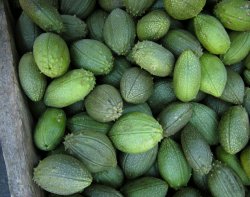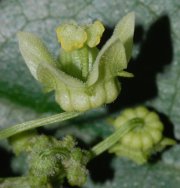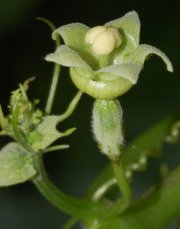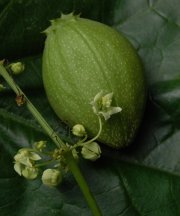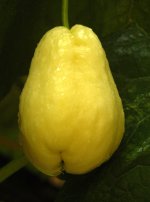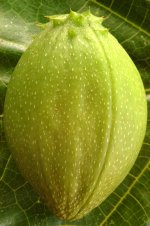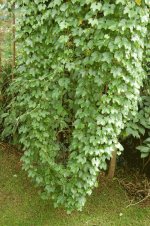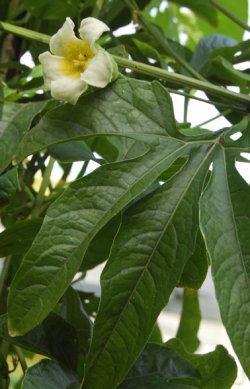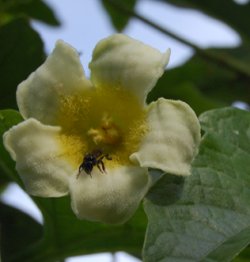 |
QUICK SEARCH
MO PROJECTS:
Africa
Asia/Pacific
Mesoamerica
North America
South America
General Taxonomy
Photo Essays
Training in Latin
America
MO RESEARCH:
Wm. L. Brown Center
Bryology
GIS
Graduate Studies
Research Experiences
for Undergraduates
Imaging Lab
Library
MBG Press
Publications
Climate Change
Catalog Fossil Plants
MO DATABASES:
W³MOST
Image Index
Rare Books
Angiosperm
Phylogeny
Res Botanica
All Databases
INFORMATION:
What's New?
People at MO
Visitor's Guide
Herbarium
Jobs & Fellowships
Symposium
Research Links
Site Map
Search
|
Draft Treatments | Guidelines | Checklist | Citing | Editors The Cutting EdgeVolume XVI, Number 3, July 2009News and Notes | Recent Treatments | Leaps and Bounds | Germane Literature | Season's Pick | Annotate your copy Sechium tacaco (Pittier) C. Jeffrey (Cucurbitaceae) wins the photo essay prize for this season, mostly because a huge plant in Hammel's back yard is just now bearing flower and fruit, apt for camera and kitchen table.
The epithet "tacaco" is also the common name of this plant, which we believe to be Costa Rica's only endemic, cultivated species of food plant. It is an essential ingredient in olla de carne, certainly what most Costa Ricans would consider their favorite "comfort food." Other recipes include simply steamed and served with butter, Tacaco soup and "Tacacos en Miel."
The related Chayote [Sechium edule (Jacq.) Sw.] is native to S. Mexico and cultivated in subtropical and tropical regions around the world. In Costa Rica numerous varieties are seen in markets, varying from the typical large (to ca. 15 cm) light to dark green version, to smaller (ca. 8 cm) and white form seen in the photo at left. The Tacaco, however, is not only eaten and cultivated exclusively in Costa Rica, but apparently is not known at all from anywhere else. Like most wild species of Sechium--a genus with eleven species total, six known from Costa Rica, three of them endemic--the fruits of Tacaco are green, slightly spiney, and when fully ripe, the flesh can be very fibrous and the seed far too bitter to eat. However, at a properly younger stage, the entire fruit (of Tacaco) is edible and tasty, somewhat remindful to this palate of aritichoke. Some of this observed difference in fibrosity and bitterness is surely genetic variation in a still-nearly-wild, cultivated species. In most areas where S. tacaco might be considered "wild" it is found in close association with man, i.e., at the edges of coffee plantations, in secondary forests along streams, and other human disturbed habitats. In fact, except for the few places where it is commercially grown for market, most plants in family plots would seem to be very marginally cultivated, more like wild plants taken care of, and left to creep up and sometimes thoroughly cover fence-row trees. The top photo in this series, part of the stimulus for a Tacaco essay, was taken at the Saturday Market in Santo Domingo de Heredia, thanks and a tip-o'-the-hat to ©Indira Hammel. All others, mere filler, are by the proud father, B. Hammel. Last minute bonus: The Cionosicys macranthus (Pittier) C. Jeffrey--another native CR Cucurbitaceae--planted in Hammel's yard has just begun to flower, staminate flowers only so far. Stay tuned for more images!
|
© 1995-2024 Missouri Botanical Garden, All Rights Reserved
4344 Shaw Blvd.
St. Louis, MO 63110
(314) 577-5100
Technical Support
